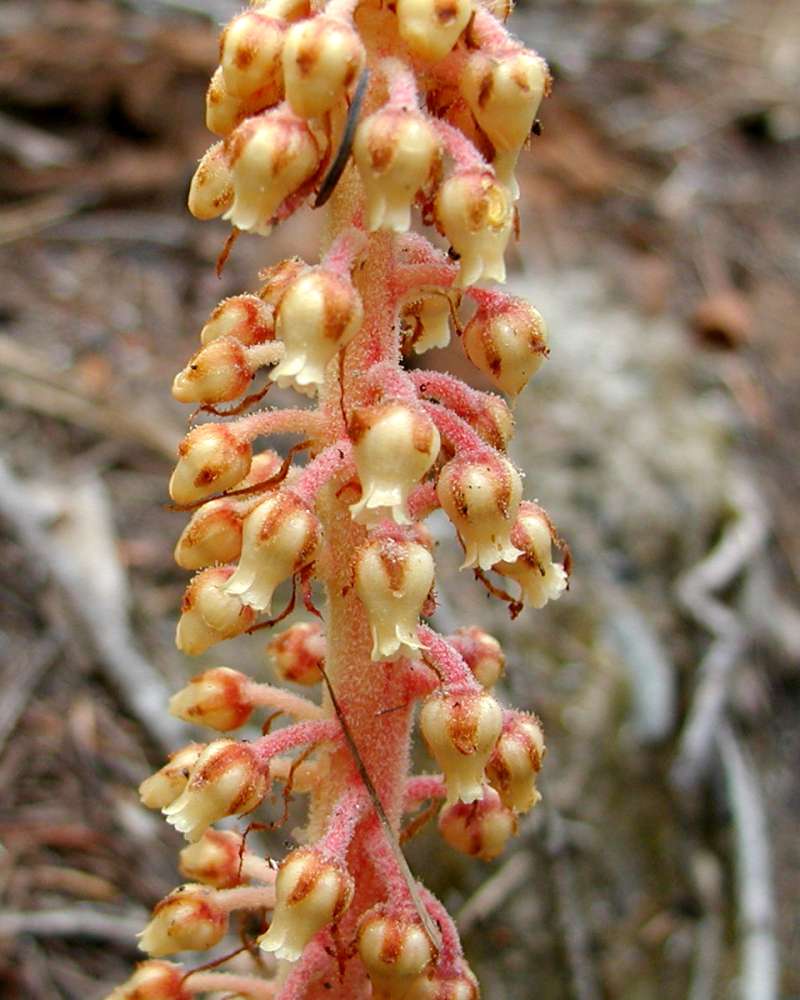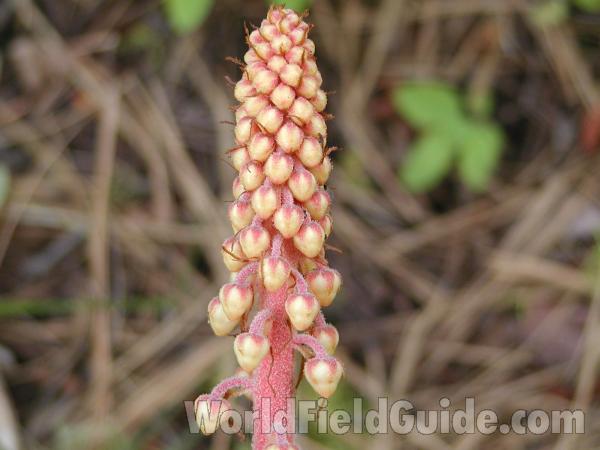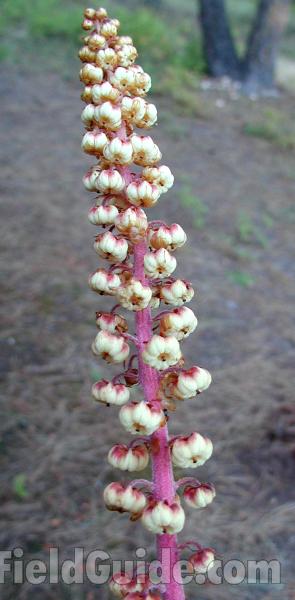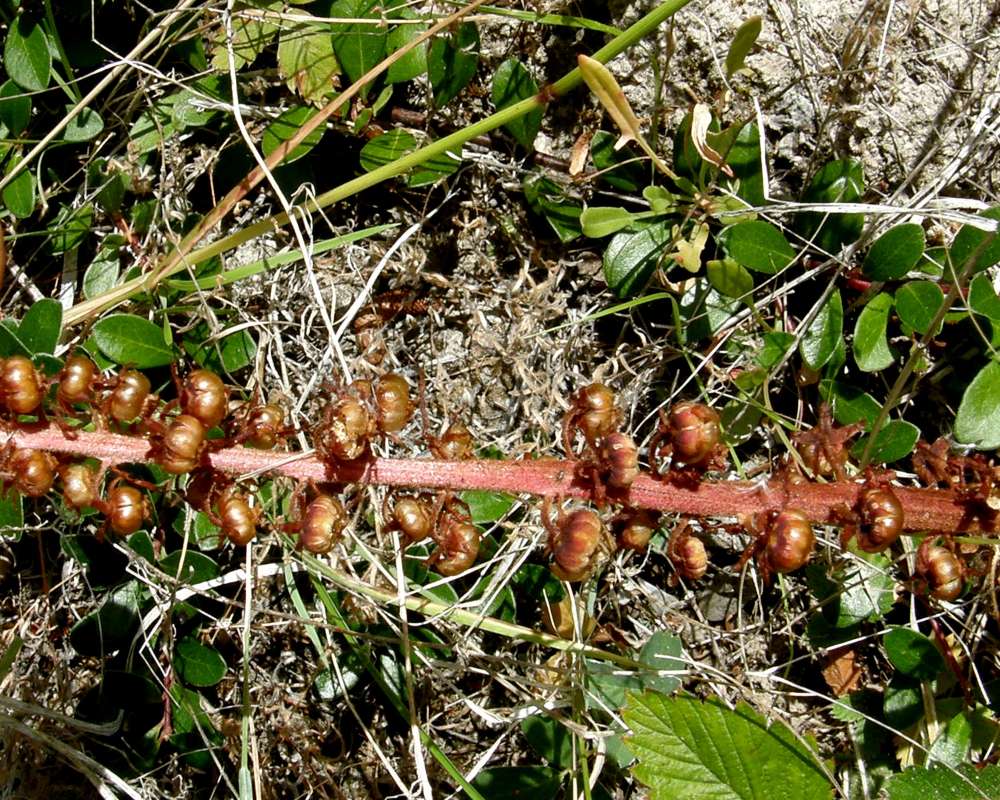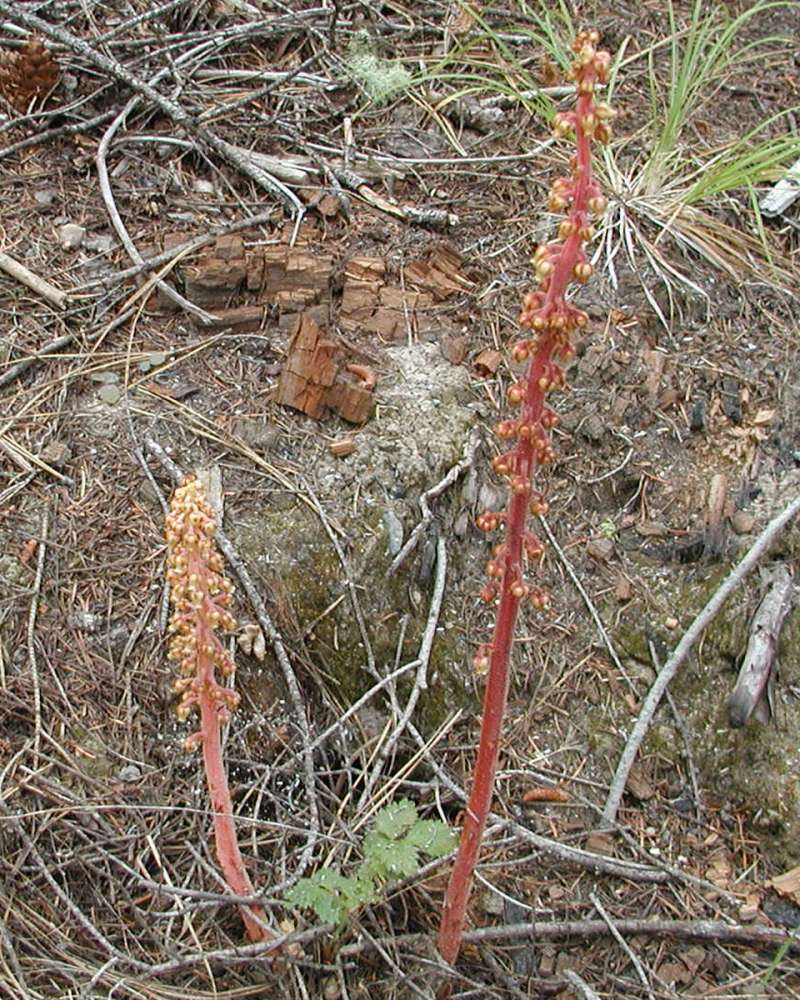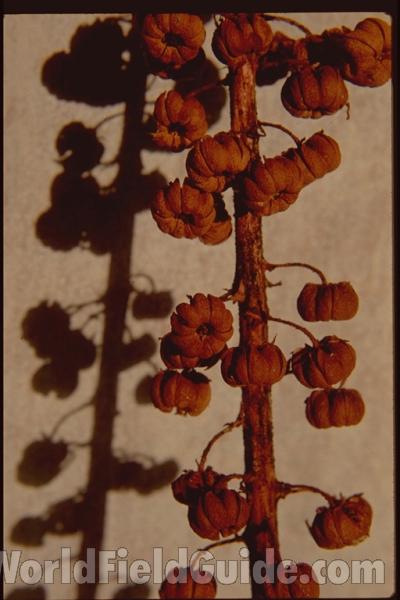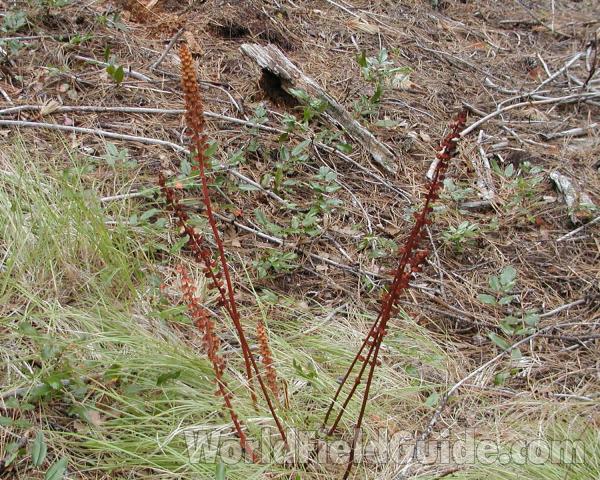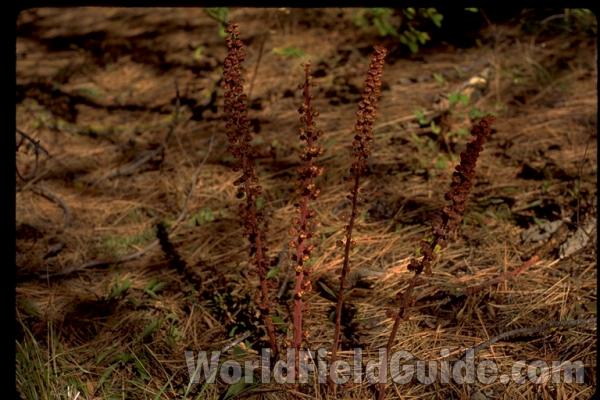SPECIES INFO
Pine drops (Pterospora andromedea) is found in rich woods from Nova Scotia west to British Columbia and south to Pennsylvania, Michigan and California. In the Rocky Mountains, this species occurs south to Arizona and Mexico. The scape is purple or brown. There are no leaves. This plant can reach 4 feet in height. The drooping flowers are white.Pterospora genus (pine drops) is found in North America with its single species. The flowers are pendulous with a five-part calyx.
Indian pipe family (Monotropaceae) is native to the Northern Hemisphere, but is most abundant in the New World. These are humus plants or saprophytes that depend on other plants for their survival. There are nine species in eight genera in North America.
Some authors never recognized this family, and included its members in the Pyrola family. (We have followed the confusion and included some members herein, but other members in the Pyrola family.) Modern authors move this family into the heath (Ericaceae) family into the Monotropoideae subfamily and then into the tribe Monotropeae.
Ericales Order is usually divided into four families. Flowers are usually 5 parted or in multiples of 5.
Dicots (Dicotyledoneae Class) are the predominant group of vascular plants on earth. With the exception of the grasses (Monocots) and the Conifers (Gymnosperms), most of the larger plants that one encounters are Dicots. Dicots are characterized by having a seed with two outer shell coverings.
Some of the more primitive Dicots are the typical hardwood trees (oaks, birches, hickories, etc). The more advanced Dicots include many of the Composite (Aster) Family flowers like the Dandelion, Aster, Thistles, and Sunflowers. Although many Monocots reach a very high degree of specialization, most botanists feel that the Dicots represent the most advanced group of plants.
Seed plants (Phylum Embryophyta) are generally grouped into one large phylum containing three major classes: the Gymnosperms, the Monocots, and the Dicots. (Some scientists separate the Gymnosperms into a separate phylum and refer to the remaining plants as flowering plants or Angiospermae.)
For North American counts of the number of species in each genus and family, the primary reference has been John T. Kartesz, author of A Synonymized Checklist of the Vascular Flora of the United States, Canada, and Greenland (1994). The geographical scope of his lists include, as part of greater North America, Hawaii, Alaska, Greenland, Puerto Rico, and the Virgin Islands.
Kartesz lists 21,757 species of vascular plants comprising the ferns, gymnosperms and flowering plants as being found in greater North America (including Alaska, Hawaii, Greenland, Puerto Rico and the Virgin Islands.
There are estimates within the scientific world that about half of the listed North American seed plants were originally native with the balance being comprised of Eurasian and tropical plants that have become established.
Plant kingdom contains a large variety of different organisms including mosses, ferns, and seed plants. Most plants manufacture their energy from sunlight and water. Identification of many species is difficult in that most individual plants have characteristics that have variables based on soil moisture, soil chemistry, and sunlight.
Because of the difficulty in learning and identifying different plant groups, specialists have emerged that study only a limited group of plants. These specialists revise the taxonomy and give us detailed descriptions and ranges of the various species. Their results are published in technical journals and written with highly specialized words that apply to a specific group.
On the other hand, there are the nature publishers. These people and companies undertake the challenging task of trying to provide easy to use pictures and descriptions to identify those species.



